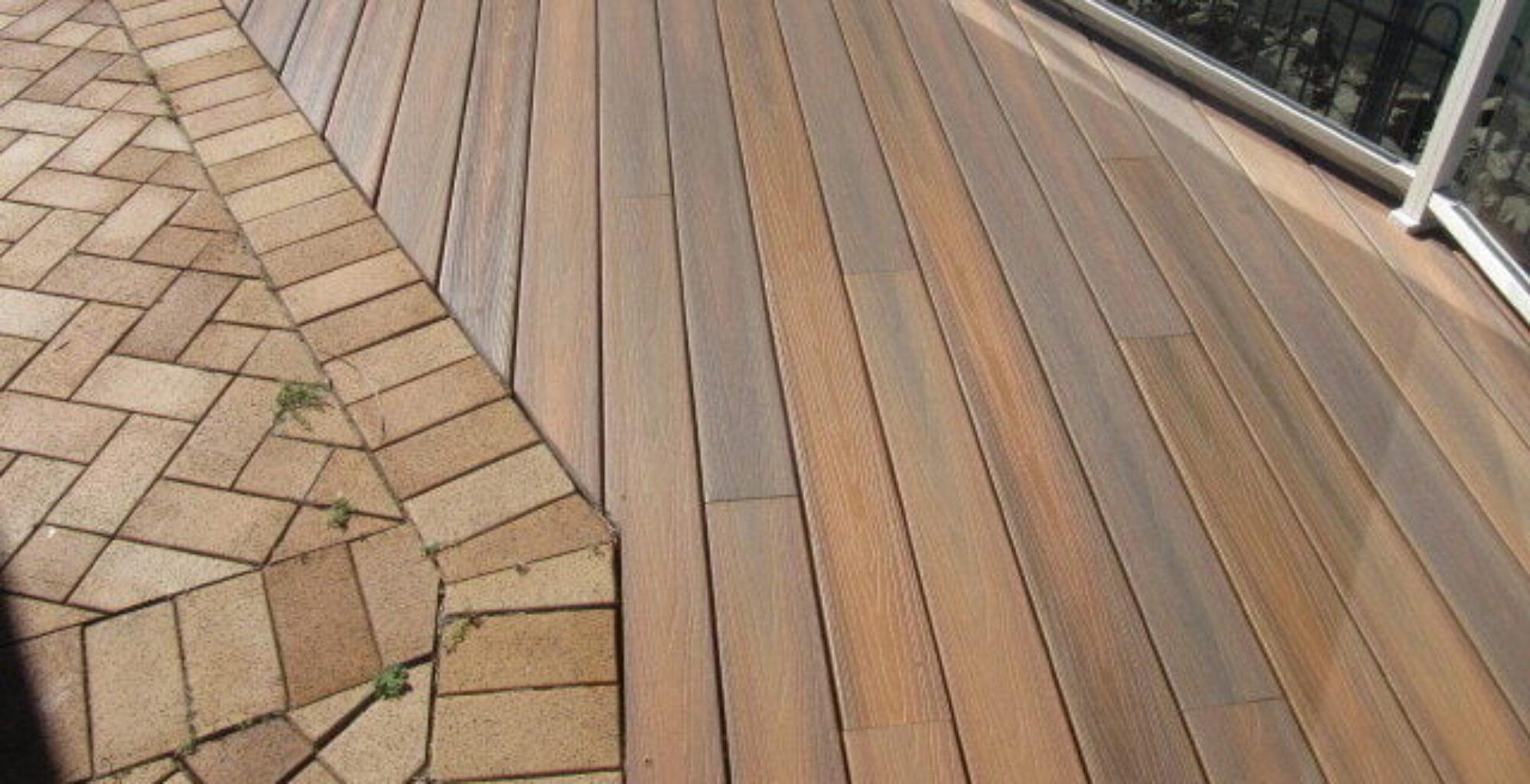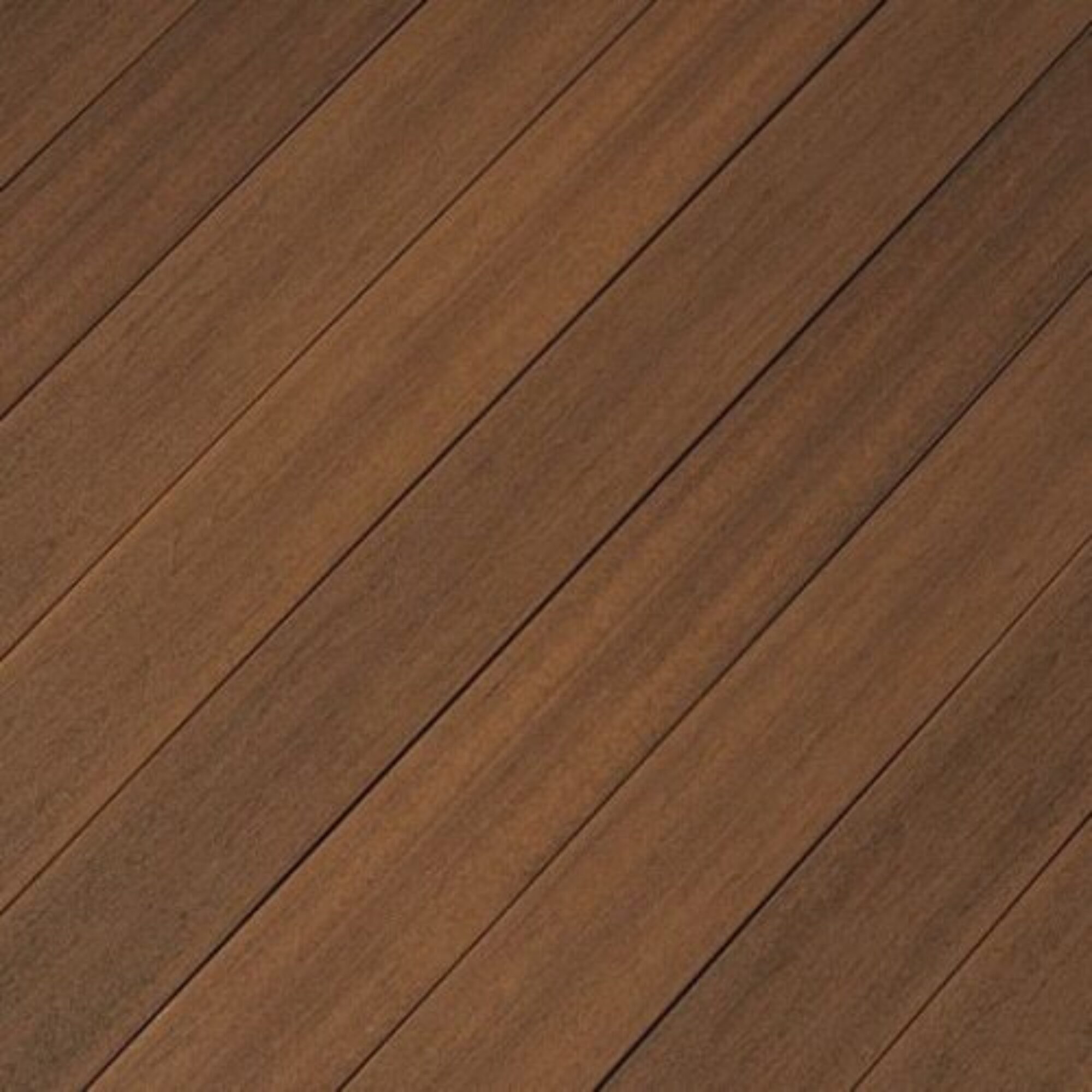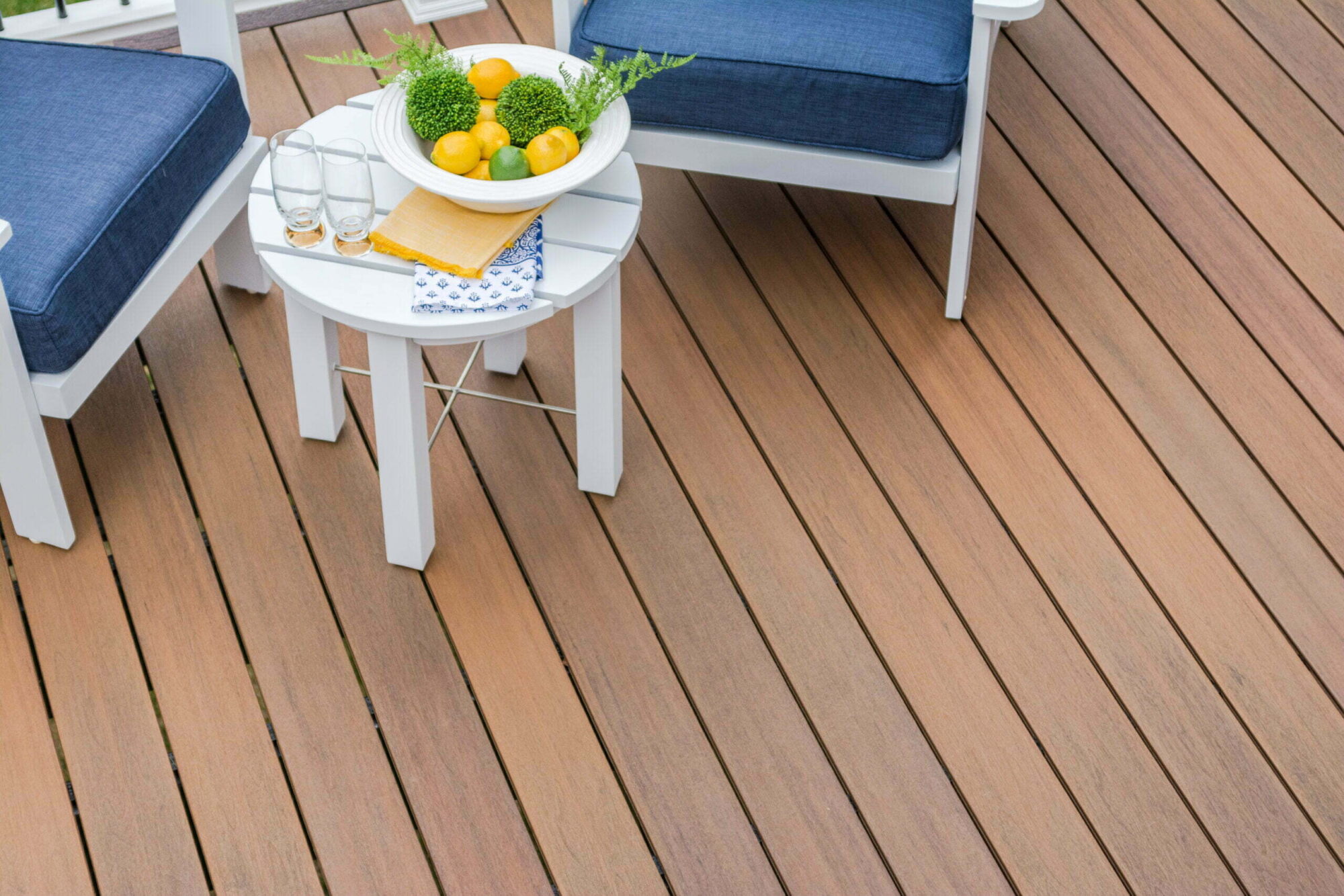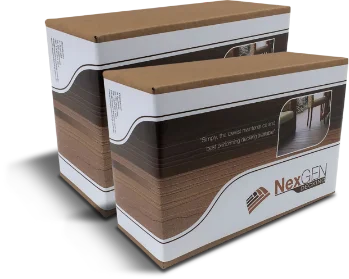Updated 22 July 2024
One of the biggest decking decisions is also deceptively simple: is it better to use natural timber, or composite decking materials?
Today, we’re going to delve deep into one of the most popular decking materials around — spotted gum. We’ll look at how it’s sourced, how it’s used, and how it looks. More importantly, we’ll see how it stacks up to composite timber decking boards when it comes to the things that often spell trouble for timber decks:
- Maintenance needs
- Appearance
- Pest infestation
- Fading issues

Everything you Need to Know about Spotted Gum Decking
Spotted gum comes from a popular Australian hardwood that grows mainly on Australia’s east coast, generally harvested from New South Wales and Queensland.
With trees that can grow up to 70 metres in height, this material can be harvested from four different native Australian species.
What Does Spotted Gum Look Like?
The tree itself has light coloured bark, ranging from white to grey. The decking product, made from the heartwood, is generally reddish-brown to golden-brown in hue.
Homeowners and builders are often drawn to the wavy grain which produces a characteristic fiddleback look.
Over time, this will fade to silvery grey – whether you want it to or not, in most cases. For some this is part of the appeal, and for others it means a lot of maintenance to avoid losing the warm hue of the new wood.

Versatile Uses
Spotted gum is fairly versatile, used regularly in several different industries such as:
- Construction and engineering
- Decking and cabinetry
- Paper manufacturing
- Shipbuilding
- House framing
It is also known to have less issues with expansion over time, unlike some other traditional timber options. This makes it a solid choice for many applications.
Comparisons to Other Hardwoods
Though spotted gum is definitely popular with Australian growers because of its ability to conserve water usage in drought-prone areas, it can be a risky investment too as it takes between 30-50 years from planting to harvest. It’s a long and involved commitment, as many hardwood options are for producers.
With all this in mind, you probably won’t be surprised at the relatively expensive cost. Among hardwood options like merbau, jarrah, and blackbutt, spotted gum is usually the priciest option.
Spotted Gum vs Merbau
In the past, we’ve taken an in-depth look at how unsustainable merbau is, a well-known Australian hardwood choice for decks, including the environmental and practical considerations of using this material for your decking project.
Spotted gum is less environmentally controversial, and can be a bit easier for the end user to deal with than merbau (which is notorious for bleeding and staining surrounding areas). However, there are some major drawbacks to using it.
Spotted Gum: Advantages and Disadvantages
There are plenty of qualities that make spotted gum decking a popular hardwood option. There are also characteristics that should make homeowners think twice before taking the plunge. Let’s take a closer look:
Advantages of Using Spotted Gum
- Relatively tough and durable. Spotted gum has a Janka Hardness rating of 11, which measures the durability of wood samples and their likelihood dent or scratch. Using other popular hardwoods for reference, jarrah is rated 8.5 and blackbutt at 9.1 on the same scale.
- Somewhat naturally fire resistive. In areas known for bushfires, boards at least 18mm thick don’t require additional fire retardant treatment.
- Low tannin content. The relatively low tannin content means that it’s less liable to bleed-through and staining than some other hardwood varieties.
Disadvantages of Using Spotted Gum
- Susceptible to mould and cupping. One major drawback is that it’s vulnerable to moisture-related issues like mould and cupping. The unattractive concave shape caused by cupping — not to mention the hassle of mould removal — can be a drawback for many homeowners.
- Easily damaged by lyctus beetle. Though spotted gum is resistant to termites, it’s susceptible to lyctus infestation. Lyctus, also known as the powderpost beetle, is a wood-boring insect that can cause considerable damage to hardwood. They can reduce infected timber to powder within the shell of the wood, which is a significant risk to structural integrity on spotted gum projects.
- Regular maintenance is required. Like other natural timber decking options, it requires ongoing maintenance in the form of oiling and sealing every 6-12 months, to maintain the desired look and protect the timber as much as possible from the elements.


Why High-Quality Composite Decking is Better
Now that we’ve looked at spotted gum decking, let’s take a look at another option for your decking needs: capped composite decking.
Though quality obviously varies by manufacturer, NexGEN capped composite decking adheres to strict and consistent quality guidelines.
Related reading: Why you can’t afford to buy cheap composite decking
Spotted Gum Composite Decking
Created from recycled materials, capped composite decking is composed of two elements: recovered hardwood fibres and UV-stabilised polyethylene.
It is completely suited for the Australian climate, built and tested to withstand harsh weather and pests.
Many homeowners are understandably drawn to the warmth and look of natural timbers like spotted gum, but the long lasting beauty of capped composite decking gives hardwood a run for its money.
Created to mimic the authentic, gorgeous colours and patterns of Australian hardwood, NexGEN’s Good Life Capped Composite Decking mirrors the warm golden brown colour of the natural timber — without some of the issues inherent to hardwood.
Spotted Gum Timber or Spotted Gum Composite Decking: What’s the Right Option for You?
If you’re looking for decking options for your home or business, you’re probably committed to making the best possible investment for your property. So what’s the better option for your needs: popular hardwood, or capped composite? Let’s do a side-by-side review:
Appearance
There’s no denying that the native hardwood is extremely attractive, and many homeowners are drawn to the look. However, spotted gum composite decking can closely mimic the authentic look of timber — complete with a variety of unique patterns that contribute to a natural grain aesthetic.
Maintenance
Like other hardwoods, spotted gum decking requires staining, sealing, and oiling to retain its luster and beauty. It’s estimated that caring for hardwood decking requires 16-32 hours annually.
By comparison, spotted gum composites should only need 2-4 hours of your time each year. Composite decking is almost maintenance free, and gives you the time to enjoy your outdoors instead of constantly working on it.
Fading and Weathering
Though some homeowners and builders like the “lived-in look” of faded decking, most would prefer that the gorgeous golden brown colour of the wood stick around. Capped composite decking is fade-free and will retain its original looks for years and years.
Insect Infestation
Remember those wood-boring Lyctus beetles? Though they’re often an issue in hardwoods like spotted gum, capped composite decking is crafted to be insect resistant.
Cost
Materials for a new generation capped composite deck will cost about the same upfront as a hardwood like spotted gum. However, you’ll find that maintenance costs can add up over the years with hardwood decking, with hardwood costing hundreds of dollars per year to maintain.
Try our composite decking price calculator to get a material cost estimate for your neck decking project.
Mold & Cupping Resistance
When it comes to moisture issues, capped composite decking definitely performs better. With resistance to mould and cupping, you can spend less time scouring your decking for issues — and more time enjoying your outdoor spaces.
Environmental Concerns
If you’re concerned about the environmental impact of deforestation and landfill waste, then capped composite decking might be the right choice for you. It’s crafted from recycled plastic and scraps from lumber mills — and designed to be toxin-free.
When you consider maintenance, mould resistance, and overall convenience, a modern deck made from composite material comes out on top.
In addition, NexGEN’s decking comes with a warranty you’re not likely to find from a hardwood dealer: A 50-year stain and fade warranty, with a lifetime performance warranty.
Ready to learn more, and get started designing the deck of your dreams? Contact us today.

DO YOU WANT A
FREE SAMPLE PACK?
Can’t decide on a colour?
Fill out the form, and we’ll Express Post your free decking samples to you ASAP!
LET’S GET STARTED
ON YOUR PROJECT
Contact us to kick things off. This will be more fun than you think!
Products
Gallery
Contact
Direct Office Numbers
Adelaide – (08) 6316 0469
Brisbane – (07) 3041 6065
Melbourne – (03) 8672 6444
Sydney – (02) 8072 6220
